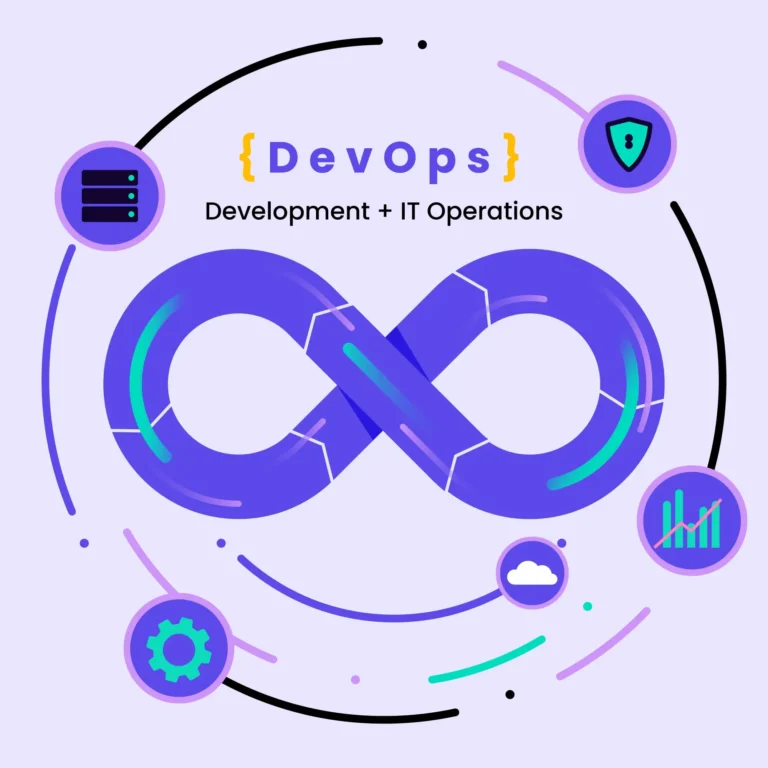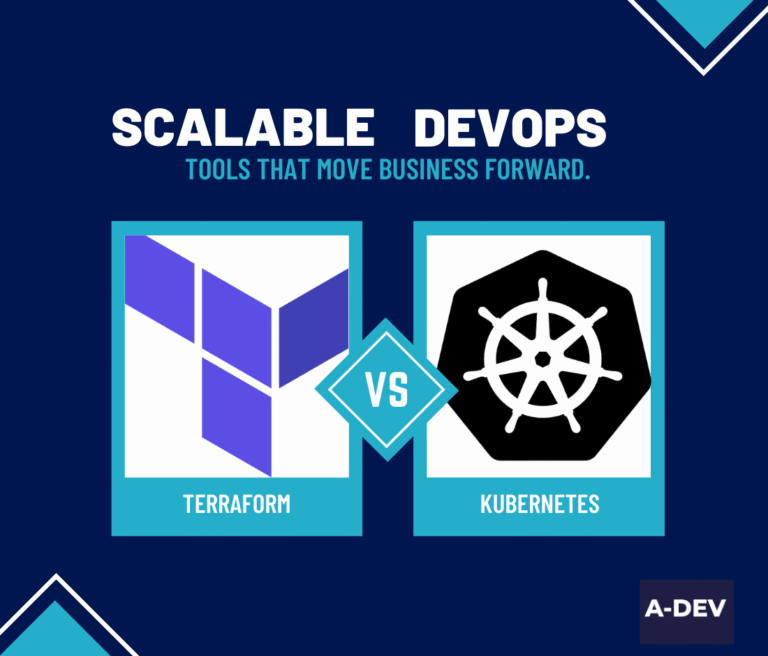Traditional monolithic application design struggles with growing complexity. Microservices architecture offers a revolutionary approach, breaking down applications into independent, modular services. This empowers development teams and unlocks a world of benefits for modern software development, including faster innovation, improved scalability, and a perfect fit for DevOps methodologies. Dive deeper and explore how microservices can transform your development process!
Microservices in Modern Software Development
Monolithic architecture treats your software like a giant, complex codebase. Imagine everything from login to recommendations tangled together. This works for small apps, but as features grow, it becomes cumbersome. Updating a single feature might require modifying the entire codebase, leading to lengthy and risky deployments.
Microservices architecture flips this approach. It breaks the monolith into smaller, independent programs called microservices. Each microservice acts like a self-contained unit owning a specific function, like user login or product recommendations. This modular approach offers significant advantages, especially for DevOps.
Traditional Monolithic Applications vs. Microservices Architecture

Key Benefits of Microservices Architecture for DevOps Adoption
- Faster Development & Deployment: Independent microservices allow development teams to work on features concurrently. This parallelism leads to a faster software development lifecycle and quicker delivery of new functionalities to market. This aligns perfectly with the core DevOps principle of continuous delivery and integration (CI/CD).
- Enhanced Agility for Modern Development: Microservices help you perform specific business functions, making them ideal building blocks for creating modern applications. This modular approach fosters agility, a core principle of DevOps and agile development. Need a new feature? Simply develop and deploy a dedicated microservice without impacting existing functionalities. This allows for rapid iteration and responsiveness to changing business needs, keeping your applications at the forefront of innovation.
- Fine-Grained Resource Management: Microservices allow you to manage resources based on individual functionalities. This means you can create microservices for specific tasks, like user authentication. When that functionality experiences high demand, you can allocate more resources to that specific microservice, optimizing resource utilization and cost efficiency. This targeted approach is a stark contrast to monolithic applications, where increasing resource demands in a single function would necessitate provisioning more resources for the entire app, even if other functionalities don’t require additional resources.
- Enhanced Reliability: If one microservice fails, it doesn’t bring down the entire application. Other microservices can continue functioning, minimizing downtime and ensuring a smoother user experience. This aligns with the DevOps principle of high availability and fault tolerance.
- Simplified Maintenance: With smaller codebases, troubleshooting and fixing bugs becomes easier. Developers can focus on specific microservices, leading to faster resolution times.
By adopting a microservices architecture, you transform your software development process from managing monolithic architectures to building and operating a network of multiple services. This shift empowers your development and operations teams to leverage the numerous benefits of DevOps methodologies. Within complex systems, microservices enable faster innovation, increased efficiency, and a more competitive advantage.
Building Software with Independent Services: The Rise of Microservices Architecture

Now that you understand the core concepts of microservices, let’s delve into the process of building microservices applications. This involves two key stages:
Breaking Down the Monolith into Microservices
If you’re transitioning from a monolithic application, the first step is identifying suitable boundaries for your microservices. Here are some key considerations:
- Business Capabilities: Align your microservices with distinct business functions. For example, user authentication, product management, order processing and other services could be separate microservices.
- Technical Considerations: Look for natural breakpoints in your codebase. Are there functionalities that are loosely coupled and could be independently deployed?
- Data Ownership: Microservices should ideally own and manage the data they directly manipulate. This promotes data consistency and simplifies maintenance.
Here’s a helpful approach to identify microservice boundaries:
- Domain-Driven Design (DDD): This methodology encourages you to model your application around business domains, which naturally translate to well-defined microservices.
- Event Sourcing: By storing application data as a sequence of events, you can decouple microservices from specific data formats and promote independent scaling.
Designing and Developing Individual Services
Once you’ve identified your microservices, it’s time to design and develop them independently. Here are some key aspects to consider:
- Technology Stack: Choose appropriate programming languages, frameworks, and databases for each microservice based on its specific needs. This promotes flexibility and avoids vendor lock-in.
- API Design: Define clear and well-documented APIs (Application Programming Interfaces) for each microservice. APIs act as the communication channels between microservices and ensure smooth interaction. Consider using RESTful APIs for a standardized approach.
- Data Consistency: Maintaining consistency across multiple microservices can be challenging. Explore technologies like eventual consistency models or distributed databases to ensure data integrity.
- Testing: Implement robust unit and integration testing for each microservice to ensure proper functionality and communication with other services.
Additional Considerations:
- Containerization: Packaging your microservices as containers (e.g., Docker containers) facilitates independent deployment and scalability.
- Deployment & Orchestration: Utilize tools like Kubernetes to automate the deployment, scaling, and management of your microservices across a distributed infrastructure.
- Monitoring & Observability: Continuously monitor the health and performance of your microservices to identify and address issues promptly. Tools like Prometheus and Grafana can be valuable in this regard.
By following these steps and considering these factors, you can build robust and scalable microservices applications that empower your DevOps strategies. These microservices can be deployed independently, enabling faster software development cycles, improved fault tolerance, and simplified maintenance. This modular approach aligns perfectly with the DevOps principle of CI/CD, allowing DevOps teams to release new features and bug fixes quickly without impacting the entire software product.
DevOps and Microservices

The synergy between microservices architecture and DevOps methodologies unlocks a powerful combination for modern software development. Let’s explore how DevOps strategies specifically support the development and management of microservices applications.
How DevOps Practices Support Microservices Development
Microservices, with their independent nature, lend themselves perfectly to the core DevOps principles of automation, collaboration, and continuous improvement. Here’s how specific DevOps practices come into play:
- Infrastructure as Code (IaC): Define and manage your infrastructure (servers, networks, etc.) as code using tools like Terraform or Ansible. This enables repeatable and automated infrastructure provisioning for each microservice deployment.
- Version Control Systems (VCS): Utilize tools like Git to manage code versions for each microservice. This facilitates collaboration, tracking changes, and reverting to previous versions if necessary.
- Continuous Integration & Delivery (CI/CD): Automate the build, test, and deployment pipeline for each microservice. This allows for frequent and reliable deployments with minimal manual intervention.
Continuous Integration & Delivery (CI/CD) for Faster Deployments
CI/CD is a cornerstone of DevOps and plays a critical role in microservices development. Here’s how it streamlines the deployment process:
- CI: Code changes from developers are automatically merged into a central repository (e.g., Git). Automated builds and tests are triggered on every merge, ensuring code quality and identifying issues early in the development cycle.
- CD: Once code passes all tests, it’s automatically deployed to a staging or production environment. This allows for frequent deployments of individual microservices with minimal risk of impacting the entire software product.
By leveraging continuous delivery and integration (CI/CD), development teams achieve increased developer productivity. This translates to faster delivery of new features and bug fixes. CI/CD automates many manual tasks, freeing up developers to focus on innovation and core functionalities. Additionally, the ability to deploy individual microservices independently minimizes risk and allows for quicker feedback loops, further accelerating the development process.
Benefits for Development Teams and Operational Efficiency
The combined power of microservices and DevOps practices offers significant advantages for both development team and operational efficiency:
Benefits for Development Teams:
- Faster Development Cycles: Independent microservices enable parallel development, leading to quicker time-to-market for new features.
- Improved Maintainability: Smaller codebases of microservices are easier to understand, test, and debug.
- Increased Team Autonomy: Microservice ownership empowers your developers to work independently and take ownership of their functionalities.
Benefits for Streamlined Operations:
- Simplified Deployments: Deploying individual microservices is faster and less risky compared to deploying the entire application.
- Enhanced Scalability: Microservices allow you to scale specific functionalities based on demand, optimizing resource utilization.
- Improved Fault Tolerance: If one microservice fails, it doesn’t bring down the entire application, leading to higher availability and a more resilient system.
- Streamlined Monitoring: Monitoring individual microservices provides deeper insights into application health and performance.
By embracing a microservices architecture and DevOps practices, you can empower your development and operations teams to work more efficiently, deliver software faster, and achieve a significant competitive advantage.
Challenges and Considerations

While microservices offer numerous advantages, adopting this architecture also introduces some challenges that require careful consideration. Here are some key areas to be aware of:
Increased Complexity in Distributed Systems
Microservices introduce a more complex system compared to monolithic applications. You’re essentially managing a collection of independent services that need to work together seamlessly. Here’s where the distributed nature brings complexities:
- Distributed Tracing: Debugging issues across multiple interacting microservices can be challenging. You’ll need robust distributed tracing tools to track requests across the entire system.
- Service Discovery: Microservices need to discover and communicate with each other. Tools like service registries and discovery mechanisms (e.g., Consul, ZooKeeper) are vital for this purpose.
- Network Latency: Communication between microservices can introduce network latency, impacting overall application performance. Careful consideration of network infrastructure and service design is required.
Managing Communication and Dependencies Between Services

Communication and dependencies between microservices need to be carefully managed to guarantee smooth operation:
- API Contract Management: Clearly defined and documented APIs are essential for communication between microservices. Versioning and managing changes to APIs require careful planning to avoid breaking integrations.
- Decoupling Services: Minimize dependencies between microservices to promote loose coupling and avoid creating a complex web of interconnected services.
- Resilience Strategies: Implement strategies like retries, circuit breakers, and bulkheads to handle service failures gracefully and prevent cascading outages.
Implementing Centralized Monitoring and Observability
Monitoring the health and performance of individual microservices and the overall system becomes crucial:
- Centralized Logging: Aggregate logs from all microservices into a centralized platform for easier analysis and troubleshooting.
- Metrics Collection: Collect key performance metrics from each microservice to identify bottlenecks and optimize resource utilization.
- Alerting and Notification: Set up alerts to notify operations teams of potential issues or service degradations for prompt intervention.
Additional Considerations:
- Security: Securing communication channels and access between microservices is vital to protect your application from unauthorized access and vulnerabilities.
- Testing: While CI/CD automates testing for individual microservices, consider investing in tools for comprehensive integration and end-to-end testing of the entire system.
By acknowledging these challenges and implementing appropriate solutions, you can ensure the successful adoption of a microservices architecture and reap its significant benefits.
The Future of Microservices
 The microservices architecture has become a dominant force in modern software development, and its future looks even brighter. Here’s why microservices are poised to play a critical role in the evolution of applications:
The microservices architecture has become a dominant force in modern software development, and its future looks even brighter. Here’s why microservices are poised to play a critical role in the evolution of applications:
Enabling Scalability, Agility, and Innovation
- Scalability on Demand: Microservices allow you to scale individual functionalities based on real-time usage patterns. This elasticity optimizes resource utilization and cost efficiency in cloud environments.
- Rapid Feature Delivery: The independent nature of microservices enables faster software development lifecycles and quicker deployment of new features, keeping your application competitive and responsive to changing market demands.
- Continuous Innovation: Microservices empower your development team to experiment with new technologies and functionalities without risking the entire application. This fosters a culture of innovation and continuous improvement.
Microservices as a Cornerstone of Modern Cloud-Based Applications
Microservices-based architecture perfectly aligns with the principles of cloud computing, where applications are built and deployed on distributed infrastructure. This natural fit unlocks several advantages:
- Cloud-Native Development: Microservices leverage containerization technologies like Docker and orchestration platforms like Kubernetes, which are native to cloud environments. This enables seamless deployment and management across distributed infrastructure.
- Serverless Computing: Microservices can be deployed as serverless functions on platforms like AWS Lambda or Azure Functions. This eliminates server management overhead and allows for highly scalable, pay-per-use deployments.
- Hybrid and Multi-Cloud Environments: Microservices architecture facilitates the deployment of applications across different cloud platforms or even on-premises infrastructure, providing greater flexibility and choice.
By embracing microservices and cloud-native applications, organizations can build highly scalable, agile, and resilient applications that can keep pace with the ever-evolving business landscape.
In conclusion, microservices empower development and operations teams to build and deploy modern software faster and more efficiently. While challenges exist, the benefits are undeniable: increased scalability, faster innovation, and a resilient architecture.
Unlock the Full Potential: To maximize these benefits, explore our companion resource, DEVOPS IMPLEMENTATION ROADMAP. This roadmap equips your teams to seamlessly integrate DevOps with microservices, achieving faster deployments, improved collaboration, and enhanced monitoring.
By embracing microservices and empowering your DevOps teams, you unlock the full potential of modern software development, ensuring your applications stay competitive and innovative.






